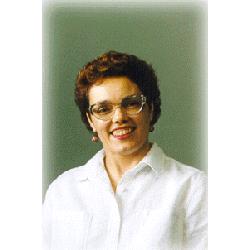CQU's 'Lovely' Star Gazer
Published on 27 March, 2002
Central Queensland University lecturer, Jeannette Delamoir, has explored the life of Louise Lovely, Australian silent film star, to discover how stars are created, maintained, represented and understood by audiences.
Lovely is almost forgotten today, although her name became more familiar in Australia in 2000, when the Australian Film Institute’s awards were named the “Lovelys” (the name was dropped the following year).
 Lovely appeared in approximately 55 motion pictures between 1911 and 1922, most made in Hollywood after she went there in 1915. Hollywood had been a film production centre for less than 10 years when Lovely arrived there, and the practices of the star system were still forming, which makes her story a case history in the strategies of stardom.
Lovely appeared in approximately 55 motion pictures between 1911 and 1922, most made in Hollywood after she went there in 1915. Hollywood had been a film production centre for less than 10 years when Lovely arrived there, and the practices of the star system were still forming, which makes her story a case history in the strategies of stardom.
It was at Universal studios, for example, that her name was changed from Louise Carbasse—under which she had appeared on the legit and vaudeville stage—to Louise Lovely. Legend has it that she was renamed by the head of the studio, Carl Laemmle, who watched her screen test and blurted out, “She’s lovely in her work and in herself. Call her Louise Lovely." As Jeannette’s research shows, however, this story of how Louise became “Lovely” is just a tiny part of a complicated process that constructs the film-industry commodity, the star persona.
The name change made Lovely into a recognizable brand, as well as an entity legally owned by the studio; when her contract with Universal ended, the company threatened her with legal action if she made films for other studios while using the name they had given her.
======Photo below, left: Australian silent film star actress Louise Lovely======= ======Photo above: CQU lecturer/researcher Jeanette Delamoir.======== Since only a fraction of Lovely’s screen output still exists, Jeannette has examined other star documents. Beginning with Lovely’s stage debut at 9 years old, when she appeared as Little Eva in Uncle Tom’s Cabin, Jeannette looks at interviews, reviews, photographic portraits, movie stills, posters, articles, theatrical programs, fliers, costumes, and promotional packages produced by the studios.
 The research, started when Jeannette lived in the United States, is illustrated by images from archives in Australia and the US. The documents are set in social, historical and cultural contexts to suggest the complicated and contradictory ways that audiences of the time may have interpreted Lovely. She represented, for example, both the modern working woman and traditional feminine values.
The research, started when Jeannette lived in the United States, is illustrated by images from archives in Australia and the US. The documents are set in social, historical and cultural contexts to suggest the complicated and contradictory ways that audiences of the time may have interpreted Lovely. She represented, for example, both the modern working woman and traditional feminine values.
Aspects of Lovely’s star persona under consideration include her name; her face; her blonde hair; her body type; her costumes; her personal appearances; her interactions with her male screen partners; and her film roles.
The research, while grounded in the silent era, is relevant today, when celebrity culture is even more prominent.
As well as exposing the tactics of creating, promoting and maintaining a star, the thesis also suggests that the star system generates dynamics that engage audiences, giving them great pleasure.

